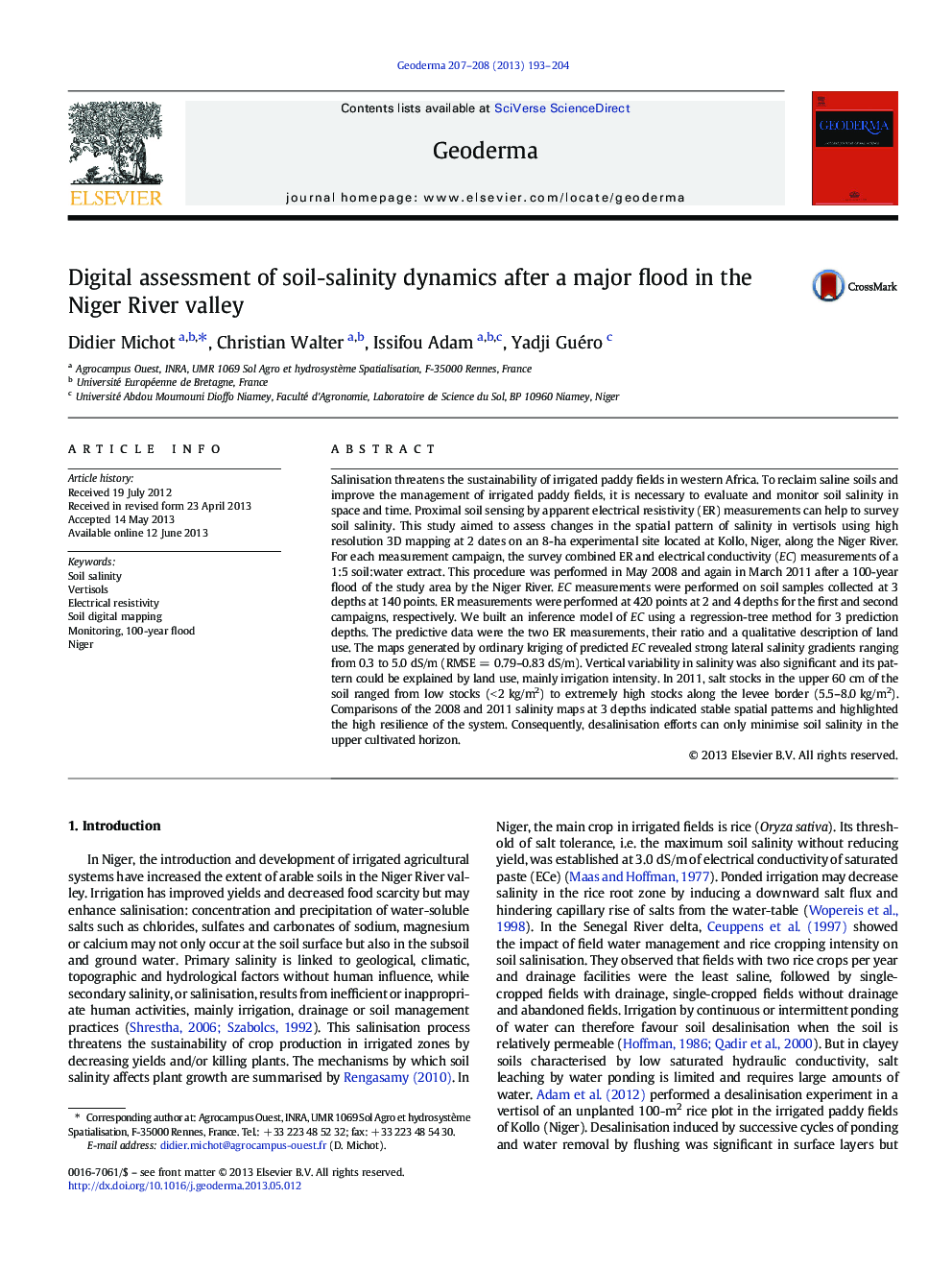| کد مقاله | کد نشریه | سال انتشار | مقاله انگلیسی | نسخه تمام متن |
|---|---|---|---|---|
| 6409168 | 1629482 | 2013 | 12 صفحه PDF | دانلود رایگان |
- We modelled soil salinity at several depths in irrigated paddy fields in Niger.
- We performed proximal soil sensing with apparent electrical resistivity measurements.
- We monitored changes in soil salinity spatial structure after a 100-year flood in Niger.
- Salt stocks ranged from 5.5 to 8.0Â kg/m2 in a soil layer 0.6Â m thick.
- We showed the high inertia of this saline soil system over time.
Salinisation threatens the sustainability of irrigated paddy fields in western Africa. To reclaim saline soils and improve the management of irrigated paddy fields, it is necessary to evaluate and monitor soil salinity in space and time. Proximal soil sensing by apparent electrical resistivity (ER) measurements can help to survey soil salinity. This study aimed to assess changes in the spatial pattern of salinity in vertisols using high resolution 3D mapping at 2 dates on an 8-ha experimental site located at Kollo, Niger, along the Niger River. For each measurement campaign, the survey combined ER and electrical conductivity (EC) measurements of a 1:5 soil:water extract. This procedure was performed in May 2008 and again in March 2011 after a 100-year flood of the study area by the Niger River. EC measurements were performed on soil samples collected at 3 depths at 140 points. ER measurements were performed at 420 points at 2 and 4 depths for the first and second campaigns, respectively. We built an inference model of EC using a regression-tree method for 3 prediction depths. The predictive data were the two ER measurements, their ratio and a qualitative description of land use. The maps generated by ordinary kriging of predicted EC revealed strong lateral salinity gradients ranging from 0.3 to 5.0Â dS/m (RMSEÂ =Â 0.79-0.83Â dS/m). Vertical variability in salinity was also significant and its pattern could be explained by land use, mainly irrigation intensity. In 2011, salt stocks in the upper 60Â cm of the soil ranged from low stocks (<Â 2Â kg/m2) to extremely high stocks along the levee border (5.5-8.0Â kg/m2). Comparisons of the 2008 and 2011 salinity maps at 3 depths indicated stable spatial patterns and highlighted the high resilience of the system. Consequently, desalinisation efforts can only minimise soil salinity in the upper cultivated horizon.
Journal: Geoderma - Volumes 207â208, October 2013, Pages 193-204
